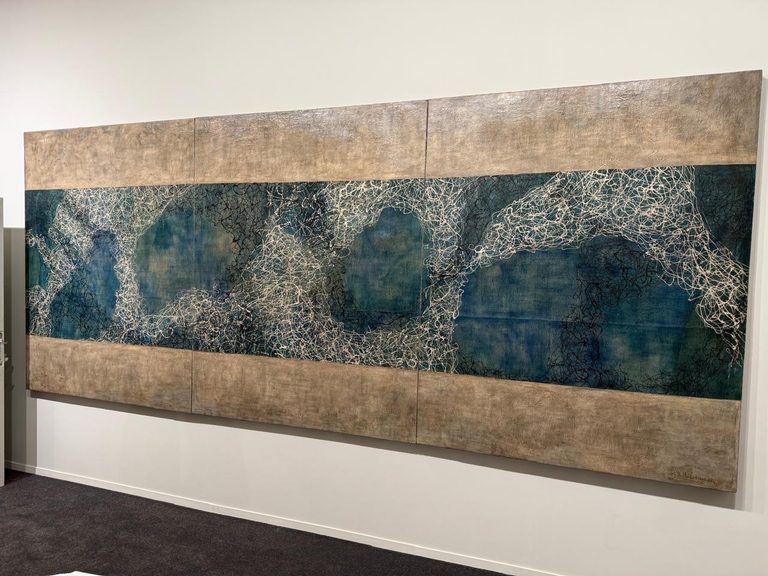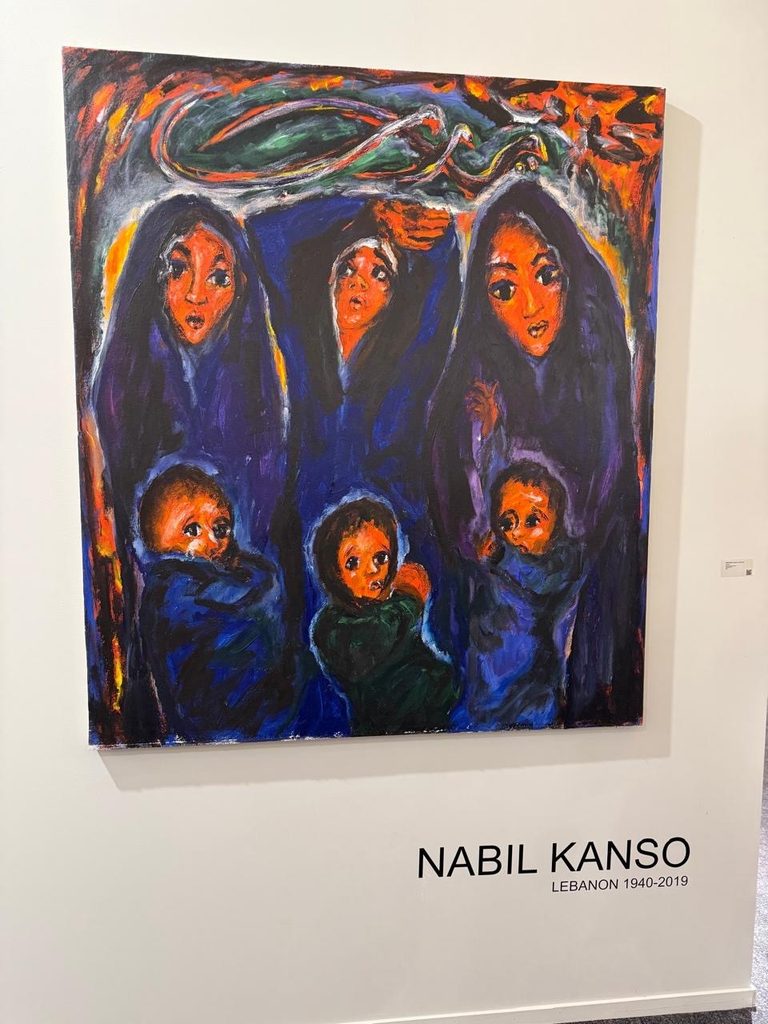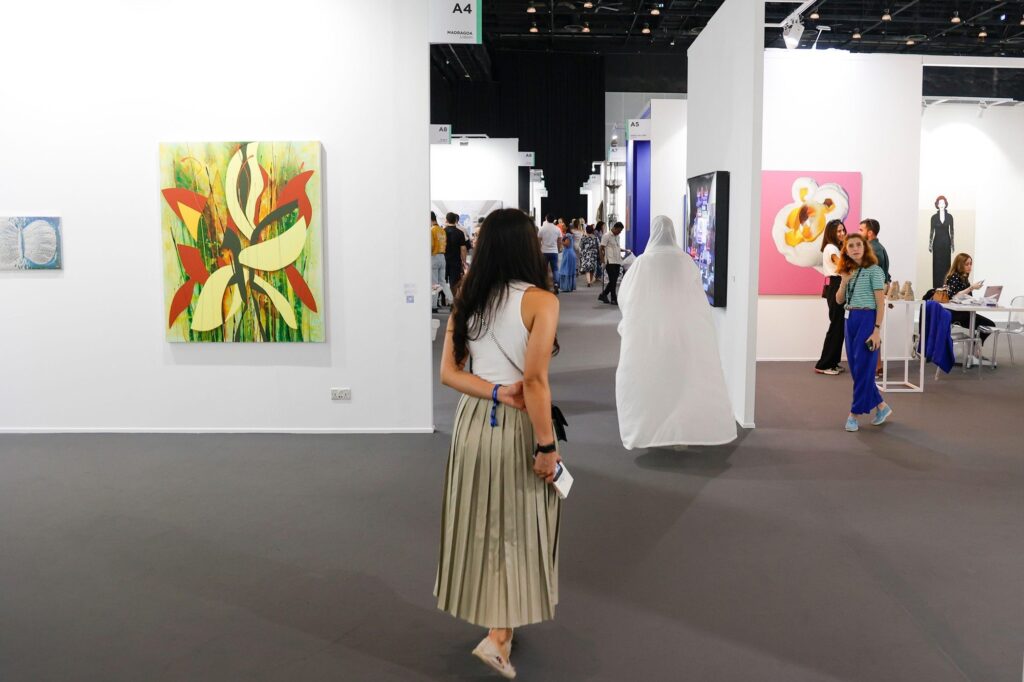It was time for my annual cultural immersion as Art Dubai 2025 rolled into town, all bubbly, Bauhaus and Blahniks.
I’ve said on multiple occasions that the spring art fest in the Madinat Jumeirah is my favourite Dubai event and – despite only making one of the scheduled three days this time – the 2025 version rewarded the anticipation.
Over the years, I’ve refined three different techniques for experiencing the joys of Art Dubai.
First, you can just let the art wash over you. With 120 galleries from 65 cities showing thousands of works of art in the cavernous Al Johara ballroom – made clinical white for the occasion – and spillover into Fort Island and the nearby Mina Al Salaam hotel, it’s quite easy to take in the whole thing in a few hours. You come out with tingling eyeballs.
The other way to do it is to peruse the programme and the various published guides carefully, find the kind of art that appeals to you and home in determinedly.
Doing this pre-event prep, my fancy was taken by a “never before exhibited” work from 1966 by Iranian artist Bahman Mohasses, entitled Starry Night.
 Frank Kane
Frank KaneWith a rough idea in my art-amateur head of something like Van Gogh’s famous nighttime painting of Provence, I went in search of this oeuvre and found a huge – 4.5 metres across – oil-on-canvas that looked like the inside of a washing machine on slow spin. I saw why it had been “never before exhibited”.
I like a bit of social commentary in my art, so the Bawwaba section also caught my eye. According to the programme, this featured recent works created by artists “living in times of great political, social and ecological turmoil”.
I was expecting something edgy, but instead mostly found swirly abstract patterns and Picasso-esque portraits – apart from one gallery of works by the late Lebanese artist Nabil Kanso which, true to national form, had apocalyptic paintings of death and destruction, fire and brimstone, and even a cock-eyed rendering of Che Guevara. That’s what I wanted; thank you, Bawwaba.
 Frank Kane
Frank KaneThe third way to “do” Art Dubai is to treat the actual art as secondary and just focus on the crowd. As a people-watching Petri dish, it has no rival surely anywhere in the world.
The best place from which to observe the pageant of bohemian glamour mixed with industrial-scale bling is the Ruinart champagne bar.
As a cross-section of Dubai’s high-net-worth population, all nationalities are represented, although I did hear a lot of Russian spoken. East Asian art aficionados were also well-represented.
But watching this pageant over a glass of water on the final day of my Lenten obligation, I put the crowd into four distinct categories.
There were younger women who were obviously very into their art and dressed accordingly: stylish in ethnic prints with the occasional avant-garde show of a single bare shoulder – respectably glamorous.
Then slightly older women who had decided just to go for it – evening dresses above deadly-looking heels (this is where the Blahniks come in) and, of course, gold and diamonds.
The division of dress styles among the men was if anything even more pronounced.
The youngsters had all seemed to go for the “impoverished artist” look and thrown on the first combination that came out of the laundry basket, which made for some garish contrasts, especially in the Digital section – think Sam Bankman-Fried level grunge.
The guy with a wispy beard who wore a Peaky Blinders cap all night looked either very “Rive Gauche” or faintly ridiculous.
Older, more affluent men went for a tailored blazer-and-chino look, sometimes with a silk cravat at the open neck of a handmade shirt. They were often in the company of the second category of women described above – not, I suspect, their wives and certainly not their first wives.
It was by the Ruinart bar that I bumped into my old pal Ben Floyd, CEO of Art Dubai, whose impeccable style always sets him apart.
“We’ve got two more days to go, but it’s shaping up to be the best Art Dubai ever, in terms of sales. There’s lots of interest in the $150,000 to $250,000 range,” he told me.
As the Dubai economy goes, so goes Art Dubai. Long may it continue.
Frank Kane is Editor-at-Large of AGBI and an award-winning business journalist. He acts as a consultant to the Ministry of Energy of Saudi Arabia
Register now: It’s easy and free
AGBI registered members can access even more of our unique analysis and perspective on business and economics in the Middle East.
Why sign uP
Exclusive weekly email from our editor-in-chief
Personalised weekly emails for your preferred industry sectors
Read and download our insight packed white papers
Access to our mobile app
Prioritised access to live events
Already registered? Sign in
I’ll register later



